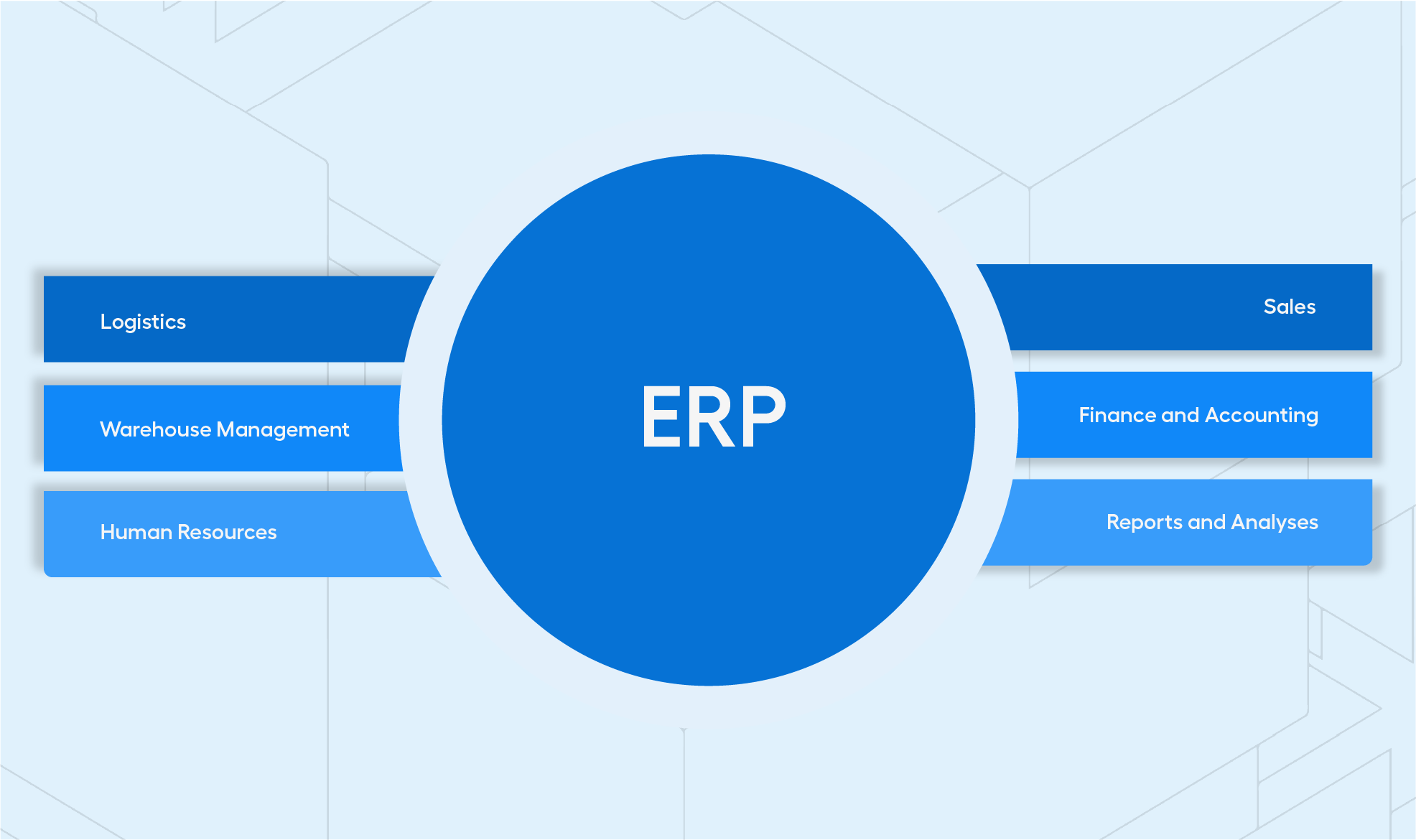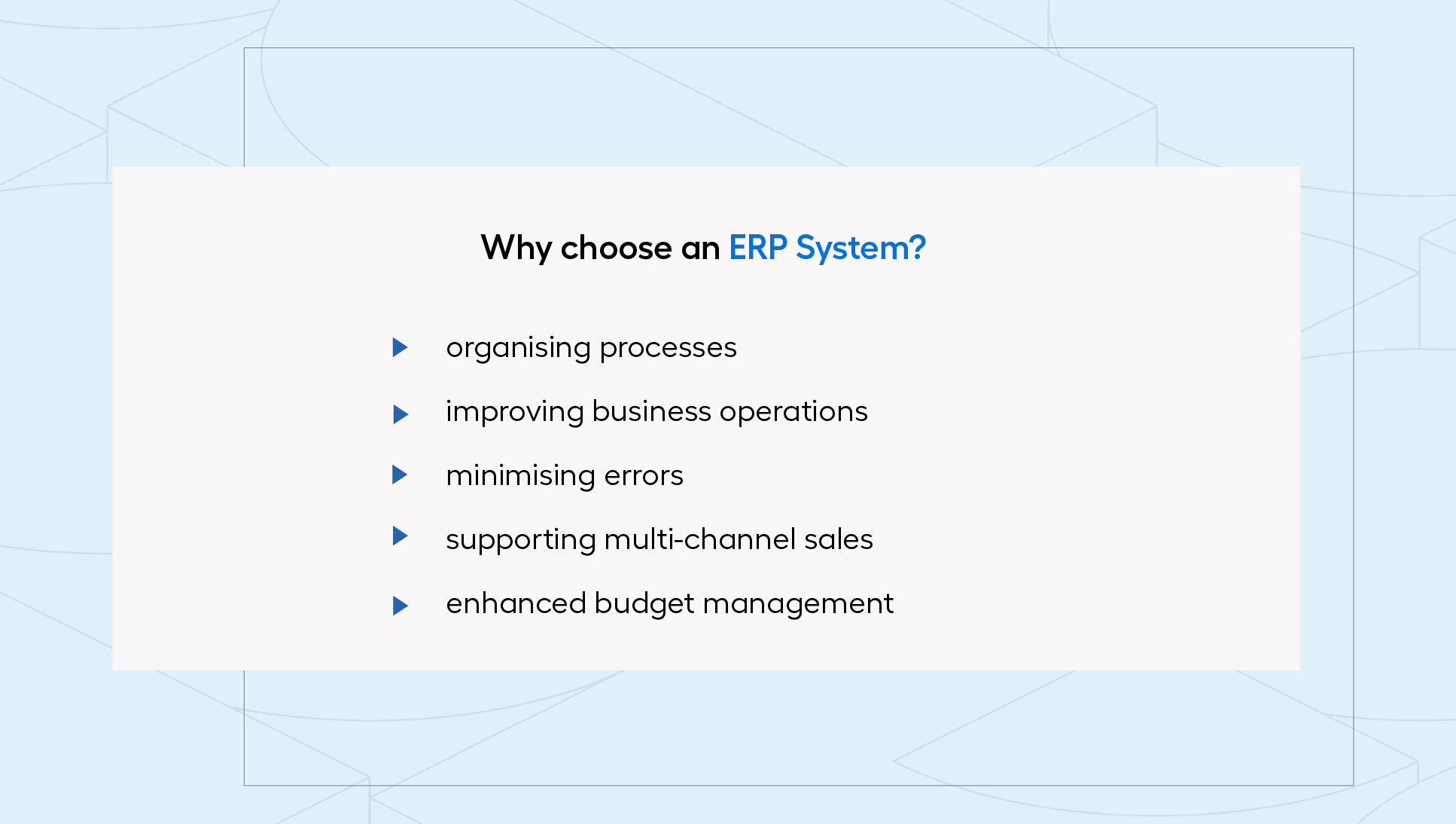Effective Management of Your Online Store. An Overview of ERP Systems for eCommerce
Table of contents:
- What is an ERP System?
- What areas of your e-store can you manage with an ERP system?
- What do you gain by implementing ERP?
- Which ERP is best for Your eCommerce?
- How does ERP integration with Magento work in practice?
- Overview of ERP systems for eCommerce
- Final choice: the best ERP for Your online store
Dozens (or even hundreds) of orders, changing inventory levels, plus coordinating deliveries and keeping track of accounting and finances. Chaos and a lack of consistency in managing these processes can lead to errors, delays, and customer dissatisfaction—situations that every eCommerce owner wants to avoid. The solution to eliminate these issues is ERP, an integrated enterprise resource planning system. Considering implementing such a solution in your online store and integrating it with your platform but overwhelmed by the multitude of options? In this article, we will help you make a decision - we'll compare the most popular systems, outline the benefits of implementing them, and offer tips on how to tailor an ERP to your business needs. Read on!
What is an ERP System?
Running an online store requires overseeing many areas simultaneously - from product storage, through sales, to customer service. Additionally, it involves not only sales-related matters but also other demanding tasks such as financial management, accounting or HR. Faced with so many challenges (especially when considering business growth), it becomes necessary to introduce tools that streamline daily operations. This is where the concept of an ERP system comes in, but what exactly does this acronym stand for?
ERP, or Enterprise Resource Planning, is a system for managing a company's resources. An ERP system integrates various business functions into one, unified system, allowing data to flow between different departments of the organisation. This enables more efficient management of business processes, minimises errors, and automates repetitive tasks.
What areas of your e-store can you manage with an ERP system?
Few people know that ERP is not a completely new solution. The precursor to Enterprise Resource Planning was MRP (Material Requirements Planning), a simple version of which was used as early as the 1950s. This system focused on production planning, available resources, materials, and work schedules, significantly increasing the efficiency of managing production processes.

Modern ERP systems are much more advanced and allow for the management of many areas of a business, adapting to various types of businesses. In an online store, ERP can be used for managing logistics, warehouse, sales, finance and accounting, human resources, and reports and analyses. Thanks to its modular structure, the system can be customised to meet specific company needs, making ERP suitable for both small and large eCommerce businesses. This means you can start with a smaller solution and gradually expand the system as your online store grows.
What do you gain by implementing ERP?
Effective management of an online store requires the organisation of business processes, and an ERP system can significantly assist with this. ERP unifies processes and supports effective coordination of activities, for example, through the automatic updating of inventory levels, allowing for quick responses to customer needs and avoiding errors (such as selling out-of-stock products on the site). Data synchronisation ensures consistent operation between departments, enabling faster decision-making and minimising the risk of exposing sensitive data.

An ERP system also helps minimize errors. Automatic data updates reduce the risk of mistakes from manual data entry. Furthermore, ERP integrates different sales channels, both online and offline, allowing you to track sales from various sources in one system. This makes it easier to monitor performance and plan sales strategies. In summary, implementing an ERP system allows for the centralization and automation of processes, leading to increased efficiency, reduced errors, and better management of the company's budget and resources. All of this will certainly positively impact the success of your online store.
Which ERP is best for Your eCommerce?
There are many different systems and companies offering ERPs on the market. Choosing the right one can be challenging, as it should not only meet your current requirements but also support your business growth in the future. Here are some key aspects to consider when choosing an ERP system for your online store:
- scalability - It’s crucial that the chosen ERP system allows for customization and the addition of new modules as your business grows. Such flexibility enables the system to adapt to the changing needs of your eCommerce.
- maintenance costs - the maintenance costs of an ERP can vary significantly depending on the licensing model. You might choose a cloud subscription or purchase a licence. However, this is just the initial expense. It's important to consider long-term costs, such as updates, technical support, and system maintenance.
- compatibility with existing platforms - ensure that the ERP system will work with your existing eCommerce platform. Whether you use SaaS, open-source, or custom configurations, it's important that the ERP is compatible and easily integrates with your current technological environment.
- implementation process - implementing an ERP can be complex and time-consuming. Before making a decision, familiarise yourself with the implementation requirements, the time needed for deployment, and the support offered by the software provider. Often, implementation requires collaboration with a software house that can help customise the system to your e-store's specific needs and provide technical support throughout the process.
- user reviews - It's also beneficial to seek opinions from other users in the industry. By reviewing the experiences of companies similar to yours, you can gain valuable insights into the effectiveness, reliability, and support offered by different ERP systems.
How does ERP integration with Magento work in practice?
What does integration with a sales platform look like in practice? Let's take one of the most popular solutions in the industry, Adobe Commerce (formerly Magento), as an example. Magento is an open-source system that offers almost unlimited possibilities for integration with external systems.
ERP integration with Magento involves several key stages to ensure a smooth connection between the two systems. The first step is a thorough analysis of business needs to determine which data and processes require synchronization. Next is the “linking” of all processes, using Magento's built-in REST API. Based on this, developers create interfaces that enable automatic data exchange between the ERP and the online store. Ensuring that data flows securely and consistently is crucial here.
The next stage is configuring data flows. For instance, inventory updates can be synchronised in real-time, while product information updates might be scheduled at specific intervals (e.g., once a week). This flexibility allows you to adjust the data flow to the specifics of your business and changing market needs.
Overview of ERP systems for eCommerce
When you start looking for the right ERP, you will come across many well-known names such as Comarch, SAP, Symfonia, Oracle, and Microsoft. Choosing the right system can be a daunting task, as each offers unique features and is tailored to different business needs. How do you avoid getting lost among all these solutions?
The key step is to conduct a detailed analysis of your current business needs and future development goals. Additionally, it’s worth consulting with experts specialising in ERP system implementation who can help you make the right choice. To help you get started, we’ve prepared a brief overview of the most popular ERP options. Check out which system might be worth considering.
Comarch ERP
Comarch ERP is popular among small and medium-sized enterprises. It offers a wide range of features, including warehouse management, accounting, sales, CRM, and modules dedicated to eCommerce. This system is known for its flexibility and ability to be customised to the specific needs of users, making it a suitable choice for companies looking for a comprehensive solution. It’s also worth noting that Comarch ERP is a Polish system, which stands out for its strong support for local laws and regulations.
ERP by SAP
SAP ERP is one of the most advanced solutions available on the market, offering a wide range of features for large enterprises. SAP is valued for its advanced analytical functions and support for many business processes, including production, logistics, and human resource management. It is used by well-known companies such as Sony, Nestle, and PwC. SAP ERP is often chosen by large e-stores with a complex organisational structure that need advanced analytical tools and scalability capabilities.
Symfonia ERP
Symfonia ERP is characterised by its intuitiveness and ease of use, making this system a great choice for small and medium-sized e-stores. The most notable feature of Symfonia ERP is the quick implementation process and low initial costs, allowing for relatively fast benefits from implementation.
ERP Oracle
ERP Oracle also offers a high level of scalability and security, making it an ideal choice for dynamically growing e-stores that focus on data analysis to optimise their processes. ERP Oracle will be the best solution for medium and large e-stores that place a strong emphasis on advanced analytics and data security.
ERP Microsoft
Microsoft Dynamics 365 offers two main ERP systems: Dynamics 365 Finance and Dynamics 365 Business Central. Dynamics 365 Finance is designed for large companies and offers advanced financial management, supply chain, and sales functions. Dynamics 365 Business Central is more suitable for small and medium-sized enterprises, offering comprehensive management of business operations in one integrated system. Microsoft Dynamics 365 is valued for its ease of integration with other Microsoft tools, such as Office 365 and Power BI, enabling the creation of advanced reports and analyses.
| ERP | Key Features | Implementation Time | Flexibility and Customization | Target Store Size |
|---|---|---|---|---|
| Comarch ERP | Warehouse management, accounting, sales, CRM, eCommerce modules | Medium | High | Small and medium enterprises |
| ERP by SAP | Produkcja, logistyka, zarządzanie zasobami ludzkimi, zaawansowana analiza danych | Długi | Wysoka | Duże przedsiębiorstwa |
| ERP by SAP | Production, logistics, human resources management, advanced data analysis | Short | Medium | Small and medium enterprises |
| ERP Oracle | Finance management, supply chain management, project management, human resources, advanced analytics | Medium to long | High | Medium and large enterprises |
| ERP Microsoft | Finance management, supply chain management, sales, integration with Office 365 and Power BI | Medium | High | Small, medium, and large enterprises |
Final choice: the best ERP for Your online store
Choosing the right ERP system for your online store is a strategic decision that can significantly impact operational efficiency and business success. When making this decision, consider factors such as support for local regulations, advanced analytical tools, user intuitiveness, scalability options, and data security. The ERP system you choose should also integrate seamlessly with existing business tools and be flexible in adapting business processes.
In summary, the choice of ERP depends on the specific needs of your business. Select a system that best supports your company's growth, increases operational efficiency, and adapts flexibly to changing market demands. If you need assistance in selecting the best solution, contact us - we will guide you through the entire ERP implementation process for your eCommerce.



